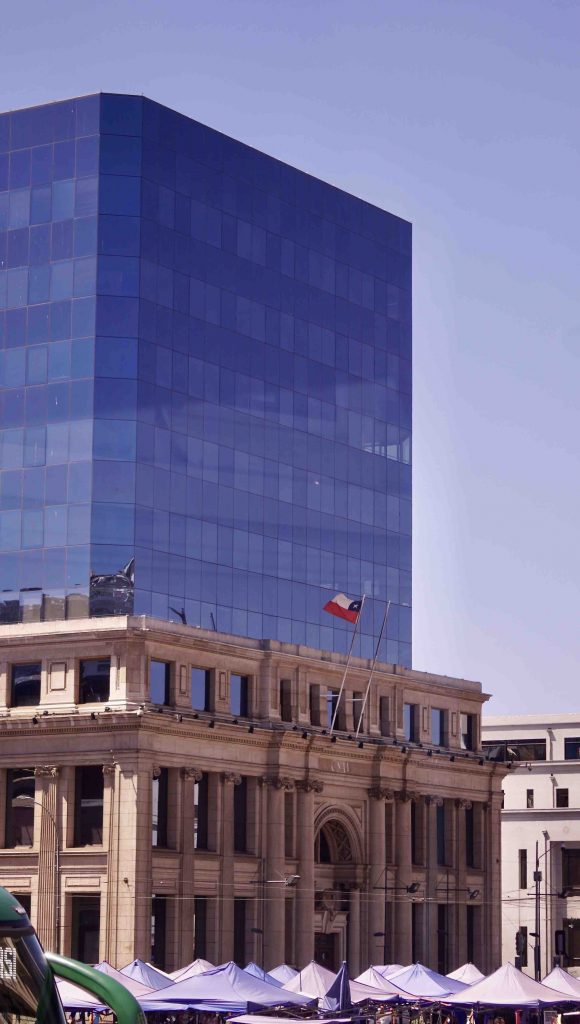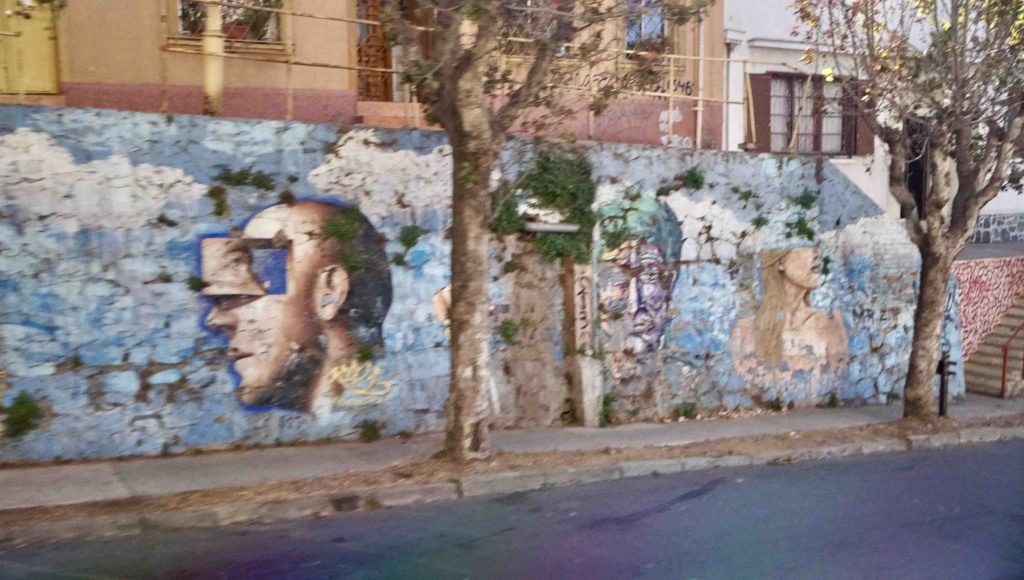Fifth Port of Call: Valparaiso, Chile
February 2022

Our fifth Viking port of call was Valparaiso, Chile. I must confess to general ignorance about Chilean history. Since the ship stayed overnight in port, I was able to take excursions on consecutive days during which the informative guides each recounted their summary of Chilean history. Whenever I’ve visited European countries, their histories are generally told as a sequence of wars, revolutions, and despotic leaders. Unfortunately, Chile’s history is the same. The inescapable observation is that human beings, acting through their countries/nationalities/& tribes, have continually waged wars for dominance.
The largest indigenous empire in early South American history was the Incan empire. The Incas assembled a large army that conquered most of what is now known as South America. They forced the conquered peoples to join their armies to participate in additional conquests. They were successful until they were met by the largest Chilean tribe, the Mapuches, who also had a large army. In a grand battle lasting several days during which thousands of fighters on both sides were killed, the Incas southern expansion was stopped. They never conquered the Mapuche and the other tribes of Chile.

Chile has a current population of nineteen million people, which includes seven hundred thousand Mapuche, who maintain their separate language and culture. South America was conquered by the Spanish conquistadors because the Spanish had guns (which the natives’ spears and swords could not resist), as well as the Spanish (and later English, Portuguese, and Dutch explorers) spreading diseases such as smallpox and leprosy, against which the South Americans had no resistance.
I’ll skip a detailed accounting of the centuries of conflicts with the Spanish and other colonizers that eventually resulted in the independent nations of South America today. But one recent event bothers me greatly. That was the action of the US government to overthrow the world’s first fairly elected Marxist leader, Salvador Allende. The CIA in the early 1970’s under President Richard Nixon financed a propaganda campaign against Allende, couple with a US economic embargo, which resulted in a coup that resulted in Allende’s death. The new leader, General Augusto Pinochet, abolished the democracy and created a dictatorship that executed thousands of Chilean citizens. Thankfully, Chile today has reestablished a democratic government. [Source—Wikepedia.org]

This paragraph is my personal opinion…some readers might disagree. The US has consistently backed oppressive dictators following World War II, including Cuba-Batista, Philipines-Marcos, Iran-Shah Reza Palavi, Guatemala-General Armas, and other dictators I’ve probably forgotten. My point is that American intervention in other countries’ political processes throughout history, more recently in Vietnam, Afghanistan, Iraq, and Syria, has not been successful. Thousands (perhaps millions!) of people have died unnecessarily. I hope that our country can promote the values that make us a positive model for others, as opposed to consistently using political, economic, and military means to attempt to maintain international dominance.
Meanwhile, back to the pleasures of the world cruise…on my city tour of Valparaiso, our guide declared that Valparaiso was the most important port on the western coast of the America’s for over three centuries. It was “discovered” in 1541 by the Spanish who developed a thriving city that was a resupply port for all ships coming from Europe around the tip of South America bound for California, Australia, or many other Pacific rim destinations. Like port cities around the world, Valparaiso was home to many nationalities, first and foremost its Spanish rulers for several centuries, but also including British, German, Italian, Portuguese, Greek, and other sailors from around the world. Each nationality’s influences are visible in the architecture and names of streets in the city.

Valparaiso’s terrain is challenging. The flat area next to the harbor is very narrow, ranging from only five blocks at its narrowest to eleven blocks at its widest. The terrain then becomes very steep. The original settlers inhabited the flat areas, while poorer people built their humble homes on the steep hillsides. There were originally over thirty funiculars (counter-balanced cable hillside railways) to transport workers to the dock area. Today there are only four still operating, though with enough funding some of the older ones could be repaired.
Valparaiso’s prosperity and importance diminished dramatically when the Panama Canal opened. Chile is one of the world’s largest source of copper and other minerals. Thus, Valparaiso still serves Chileans as the departure port for exports as well as being the home of Chile’s warships. Why does Chile need warships? As a defense against its neighbor Argentina, of course. Our guide told the story that in 1978 Chile and Argentina were on the brink of war, which was avoided only by personal calls by the Pope to both countries’ presidents. Argentina also fought a war against England 1982 when Argentina tried to take over the Falkland Islands.
Valparaiso has a famous university which attracts students from around the world. It is a major tourist destination with its international airport. It is also located close to many great wine vineyards. Chile took grape varieties from France and Italy and learned to produce world class wines in vineyards successfully adapted to Chile’s terroir (soil, topography, and climate). Chilean wines of world class quality tend to be less expensive than similar European wines due to Chile’s lower labor costs. China, through its “Belt and Road Initiative” is developing its own wine industry based on grape vines imported from Chile.

Being in port over a two day period enable us to visit a Chilean winery. The vineyards were immaculately maintained. The setting was reminiscent of Napa Valley wineries (except that Napa Valley wineries now charge money for their “tastings” which used to be free). The winery we visited was part of a vintners’ cooperative. We were served a Chardonnay, a Pinot Noir, and a Carmenere, which is a wine originally from France but now grown only in Chile. All the wines we were offered for tasting were excellent. We were not offered Chile’s most famous wine, Malbec.

One thing that detracted from the overall impression of Valparaiso was the widespread graffiti. Some graffiti is truly artistic. But much of it is ugly and detracts from its setting. I asked our cruise guide who paints the graffiti, and he replied, “Young people.” I guess I must be too old to appreciate the rebellion and creativity that it’s meant to symbolize. All the graffiti photos were taken through the window of the moving tour bus. Below, examples of the good, the bad, and the ugly.


Finally, our Valparaiso city tour included a visit to an anthropological museum, which contained artifacts and products from Chile’s original indigenous tribes. However, the museum’s claim to fame is the only “moai” stone statue exhibited outside of its famous origin, Easter Island. Easter Island, in Spanish Isla de Pascua, in its original name Rapa Nui, is one of the most isolated islands in the South Pacific. Its original inhabitants were so-called Polynesians that inhabit Tahiti, Fiji, the Marquesas Islands, etc. I learned that these Polynesians originated from the island of Taiwan, slowly populating the islands to the south of Taiwan and across the South Pacific. They are estimated to have come to Easter Island between the years 800-1200 AD. The island is famous for its unique stone statues, but infamous for its ecological catastrophe, described in detail in the Jared Diamond book Collapse: How Societies Choose to Fail or Succeed (2005).
Though Jared Diamond’s theories of the societal breakdown on Easter Island have been contradicted by recent research, certain events are not disputed. Sediment core samples taken from the island’s lakes provide a biological history spanning over a thousand years. This core samples show that prior to the arrival of humans, Easter Island was probably covered with forests, including three species of now extinct palm trees. Birds were also plentiful. Unfortunately, the Polynesians brought with them rats that ate the palm tree seeds, reducing their reproduction. The Polynesian inhabitants eventually cut down all the trees, thus preventing the construction of boats, and reducing the available food. It’s theorized that trees were used to roll/move the maoi statues from their construction sites to their final locations. It’s theorized that over-population outstripped the available food supplies. The number of inhabitants numbered over ten thousand at its peak, but only 2-3 thousand when the first Spanish sailors discovered the island. Thus, Easter Island is a “poster child” for what can happen with the environment is degraded by humans to the point of their demise.
There are many more stories to tell about Chile and Easter Island. But I have to finish this blog and then begin to write blogs about upcoming ports. When we have a number of sea days in a row, I plan to write a blog about life on the ship, including photos from around the ship. After being in weather in the nineties, we’re sailing south into cold weather. In a few days we will sail into a Chilean fjord to view a glacier. The boat has been covid-free for over a week! Cheers!

The Italian architect hollowed out one of Valparaiso's classic historic buildings, and then constructed a modern skyscraper with a footprint totally within the confines of the original building's shell facade!









9 Comments on Fifth Port of Call: Valparaiso, Chile
1 Reply
Join the Conversation